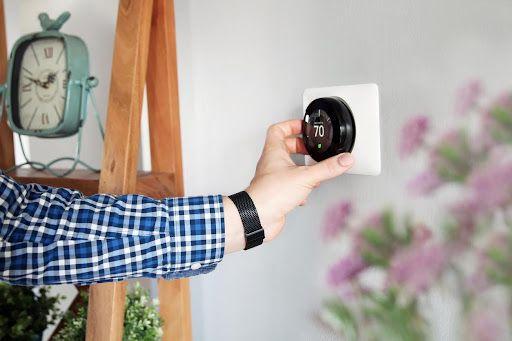How Long Does a Thermostat Last?

Your thermostat plays a critical role in regulating the temperature of your home and ensuring energy efficiency. However, like any electronic device, thermostats have a limited lifespan. HVAC.com explains the average lifespan of a thermostat and the key signs that indicate it might be time for a replacement.
Average Lifespan of a Thermostat
On average, modern home thermostats have a lifespan of about 10 years. How long does a thermostat last can vary depending on several factors, including:
- Type of thermostat: Older mechanical thermostats tend to last longer than newer digital models. However, their accuracy can decline over time.
- Brand and quality: Different brands offer varying levels of quality and durability. Opting for reputable brands known for longevity can extend your thermostat's lifespan.
- Usage and maintenance: Frequent adjustments, power surges, and dust buildup can wear down your thermostat faster. Proper care and infrequent use can contribute to a longer lifespan.
Signs Your Thermostat May Need Replacement
Even before reaching the 10-year mark, your thermostat might show signs of trouble. Here are some red flags to watch out for:
Inaccurate Temperature Readings
One of the early signs that your thermostat may be on its last legs is if it consistently displays inaccurate temperature readings. Is your home feeling significantly warmer or cooler than the temperature set on the thermostat? This could indicate a faulty sensor or internal component.
Uneven Heating and Cooling
An aging thermostat may struggle to maintain a consistent temperature in your home. Are certain rooms consistently hotter or colder than others? If you find yourself frequently adjusting the thermostat but still experiencing discomfort, it could be a signal that the thermostat is no longer functioning optimally.
Delayed Response or No Response
A responsive thermostat is crucial for efficient temperature control. If you experience delays in the system responding to your adjustments or find that it’s unresponsive altogether, this could indicate worn-out components or electrical issues. In such cases, it’s advisable to consult with a professional HVAC technician to determine whether repair or replacement is the best course of action.
Blank or Flickering Display
If the display is malfunctioning on your digital thermostat, it’s difficult to control the temperature accurately. This could be a symptom of internal damage or a failing power supply.
Excessive HVAC System Cycling
Does your heating or cooling system seem to turn on and off frequently, even when the temperature hasn’t changed much? This rapid cycling can put unnecessary strain on your HVAC system and could be a sign of a thermostat issue. Excessive cycling not only affects your comfort but also puts unnecessary strain on your heating and cooling systems, potentially leading to increased energy bills and premature system wear.
Outdated Technology
If your thermostat is a relic from a bygone era, lacking modern features like programmability, Wi-Fi connectivity, and energy-saving settings, it might be worth considering an upgrade. Newer models not only provide enhanced functionality but also contribute to increased energy efficiency, saving you money in the long run.
The Benefits of Replacing an Old Thermostat
While replacing your thermostat might seem like an unnecessary expense, there are several compelling reasons to consider it, especially if you’re experiencing any of the signs mentioned above:
- Improved comfort: A functioning thermostat ensures your home maintains the desired temperature more consistently, leading to increased comfort for you and your family.
- Enhanced energy efficiency: Modern thermostats, particularly programmable and smart models, offer features like automatic scheduling and learning capabilities that can significantly reduce your energy consumption, leading to lower utility bills.
- Greater control: Upgrading to a smart thermostat allows you to control your home’s temperature remotely using your smartphone or voice commands, offering ultimate convenience and flexibility.
- Peace of mind: Knowing your thermostat is reliable and in good working order eliminates the worry of unexpected breakdowns and temperature fluctuations.
Making the Decision to Replace Your Thermostat
Ultimately, the decision of when to replace your thermostat depends on your specific situation and needs. If your current thermostat is functioning flawlessly and approaching its 10-year mark, you might choose to wait until it shows signs of trouble. However, if you’re experiencing any of the issues mentioned above, or if you’re interested in the benefits of a more advanced model, replacing your thermostat sooner could be a worthwhile investment.